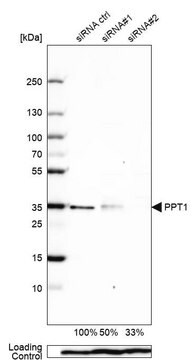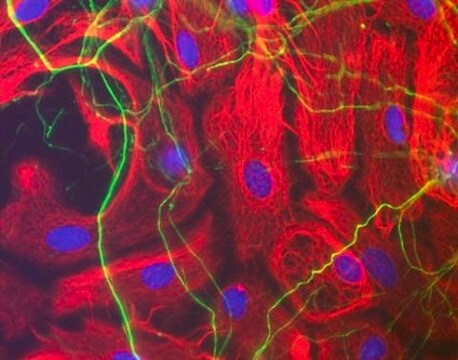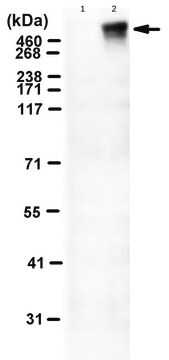ABS2269
Anti-TRPM4
Synonim(y):
Transient receptor potential cation channel subfamily M member 4;Calcium-activated non-selective cation channel 1;Long transient receptor potential channel 4;TrpC-4;LTrpC4;MLS2s;Melastatin-like 2
About This Item
Polecane produkty
pochodzenie biologiczne
rabbit
Poziom jakości
forma przeciwciała
purified antibody
rodzaj przeciwciała
primary antibodies
masa cząsteczkowa
calculated mol wt 135.34 kDa
observed mol wt ~135 kDa
oczyszczone przez
affinity chromatography
reaktywność gatunkowa
rat, mouse
opakowanie
antibody small pack of 100 μg
metody
immunocytochemistry: suitable
immunohistochemistry: suitable
western blot: suitable
izotyp
IgG
sekwencja epitopowa
C-terminal extracellular half
numer dostępu Protein ID
numer dostępu UniProt
temp. przechowywania
-10 to -25°C
docelowa modyfikacja potranslacyjna
unmodified
informacje o genach
rat ... Trpm4(171143)
Powiązane kategorie
Opis ogólny
Specyficzność
Immunogen
Zastosowanie
Evaluated by Western Blotting in lysate from HEK293 cells transfected with Mouse TRPM4.
Western Blotting Analysis (WB): A 1:1,000 dilution of this antibody detected TRPM4 in lysate from HEK293 cells transfected with Mouse TRPM4.
Tested Applications
Immunocytochemistry Analysis: A representative lot detected TRPM4 in Immunocytochemistry application (Low, S.W., et. al. (2021). Sci Rep. 11(1):10411).
Immunohistochemistry (Paraffin) Analysis: A 1:250 dilution from a representative lot detected TRPM4 in rat spinal cord tissue sections.
Note: Actual optimal working dilutions must be determined by end user as specimens, and experimental conditions may vary with the end user.
Postać fizyczna
Rekonstytucja
Przechowywanie i stabilność
Inne uwagi
Oświadczenie o zrzeczeniu się odpowiedzialności
Nie możesz znaleźć właściwego produktu?
Wypróbuj nasz Narzędzie selektora produktów.
Kod klasy składowania
12 - Non Combustible Liquids
Klasa zagrożenia wodnego (WGK)
WGK 2
Temperatura zapłonu (°F)
Not applicable
Temperatura zapłonu (°C)
Not applicable
Certyfikaty analizy (CoA)
Poszukaj Certyfikaty analizy (CoA), wpisując numer partii/serii produktów. Numery serii i partii można znaleźć na etykiecie produktu po słowach „seria” lub „partia”.
Masz już ten produkt?
Dokumenty związane z niedawno zakupionymi produktami zostały zamieszczone w Bibliotece dokumentów.
Nasz zespół naukowców ma doświadczenie we wszystkich obszarach badań, w tym w naukach przyrodniczych, materiałoznawstwie, syntezie chemicznej, chromatografii, analityce i wielu innych dziedzinach.
Skontaktuj się z zespołem ds. pomocy technicznej







